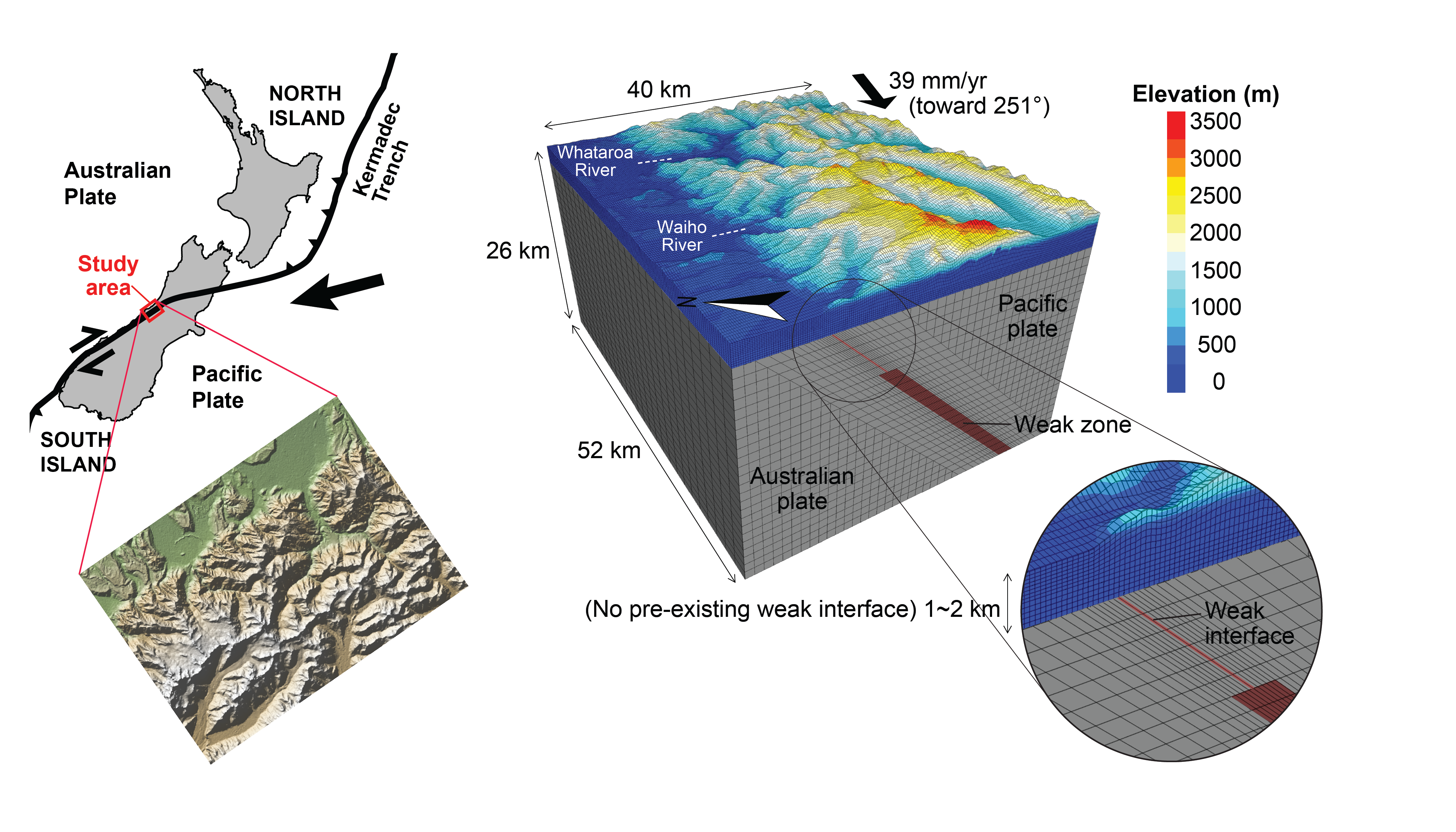Difference between revisions of "Strain Partitioning and Fault Segmentation"
(Created page with " == Role of topography, rock rheology, and boundary conditions in strain partitioning and fault evolution in active transpressional orogens == Song, B.R. 1; Upton, P. 1, 2; K...") |
(No difference)
|
Revision as of 18:18, 7 June 2018
Role of topography, rock rheology, and boundary conditions in strain partitioning and fault evolution in active transpressional orogens
Song, B.R. 1; Upton, P. 1, 2; Koons, P.O. 1 1 School of Earth and Climate Sciences, University of Maine 2 GNS Science
Introduction
Strain partitioning and fault segmentation in transpressional mountain belts appears linked to stress perturbations controlled by oblique tectonic loading, topographically-induced stress, dynamic stress during fault rupture, and their heterogeneous interactions. Field-based studies alone cannot provide full information on the spatial and temporal variation of stress patterns and the relative impact of the controlling factors due to complexity along with coupling between tectonic deformation and surface processes. For this reason, kinematic and dynamic characteristics of 3-D deformation formed by strain partitioning in an obliquely convergent region such as the Southern Alps, New Zealand, is still poorly understood. In this study, we investigate the numerical solution for 3-D deformation to answer the following questions. (1) How sensitive is strain partitioning and fault evolution to rock rheology and boundary conditions? (2) How are the stress and strain distributions around a fault zone reflected in fault segmentation and how do they relate to the topography?
